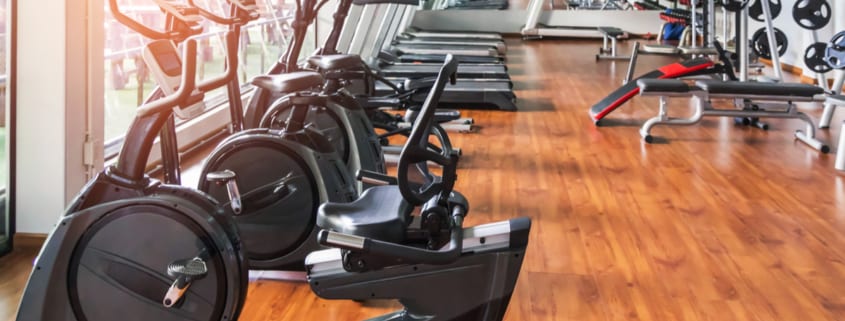How Fitness Centers Are Reviving Struggling Shopping Malls
The fitness and health club industry has become a $30 billion market with more than 36,000 facilities across the United States. Fitness centers are experiencing a more rapid, steady growth than in the past largely because of the expansion of the wellness trend, which has gained much of its momentum from the social media craze.
As rapidly as fitness centers are popping up around small towns and large cities alike, empty shopping mall retail vacancies are increasing in number too. Amidst the struggles facing modern-day shopping malls, fitness centers are becoming the unlikely tenant helping to revive empty retail spaces within malls across the country. While the concept of placing fitness centers within malls is not new, this trend in practice has increased by approximately 70% since 2013, driving much needed traffic and revenues to struggling malls.
Read ahead to learn how fitness centers located within shopping malls are creating opportunities for reviving the future of struggling facilities.
Replacing Department Stores
Over a decade ago, department stores were traditionally anchor tenants within shopping malls because of their popularity and ability to drive business to smaller retailers. Today, however, the declining popularity of department stores combined with the mass closings of retailers like Macy’s, JC Penney, and Sears has led developers to seek new anchor tenants, as they are still critical to the overall success of retail developments.
According to Coresight Research, approximately 1 in 5 department stores in the United States will close by 2023. Despite the gradual demise of department stores, fitness centers are experiencing an unprecedented amount of growth, leading them to become a new, more ideal alternative to traditional anchor tenants. In addition, these fitness centers can take advantage of the large square footage, convenient locations, and ample parking options that vacant department stores left behind.
Increasing Foot Traffic
Fitness centers were once unwanted by mall landlords because of their belief that gyms provided little value and were detrimental to the retail environment. However, as shopping mall foot traffic began to suffer and developers began seeking new, experiential retail tenants, gyms became a viable option for helping struggling malls increase their foot traffic.
In today’s e-commerce dominated and instant gratification society, fitness and health clubs are a major differentiator because there is no way to use the workout equipment or get results without physically going to the gym. Malls that have adopted fitness centers as tenants are likely to see an increase in foot traffic being that the average member visits the gym about 3.6 times per week. The frequency of visits to these fitness centers creates steady, reliable foot traffic for the mall, as well as convenience for gym members.
Although mall fitness center members are visiting the mall with the sole intent of exercising, the increased foot traffic of one-stop shoppers could lead to a potential pre- or post-workout browse or food court visit. With more than 60 million fitness and health club members in the United States alone, there are many opportunities for increasing the number of consumers who visit malls on a daily or weekly basis.
Creating Lifestyle Destinations
There is a growing demand amongst consumers for experiences that cannot be created online and that foster opportunities for socializing. As shopping malls continue to struggle, repositioning them to be more experiential and diversified by turning them into a “lifestyle destination” is becoming a more highly used approach by owners and developers.
According to JLL, malls that appeal to customers’ lifestyles beyond shopping are more effective. Fitness centers are one approach to creating a lifestyle destination by providing health and wellness options that appeal to a larger audience of mall-goers. Because of the growing trend of focusing on self-care and overall wellbeing, there is a rise in fitness centers being dispersed amongst food courts and clothing retailers.
Additionally, higher-end malls have begun accepting boutique fitness tenants, such as SoulCycle, Orangetheory Fitness, and Pure Barre. Boutique fitness centers provide a more personalized workout experience and are led by certified instructors. Mall developers and owners are resourcefully finding and creating ways to provide a lifestyle destination that will inspire consumers to visit struggling malls more frequently.
Read Vacant Malls Create Convenient Mixed-Use Buildings for Adaptive Reuse to learn more about readapting vacant shopping malls.











